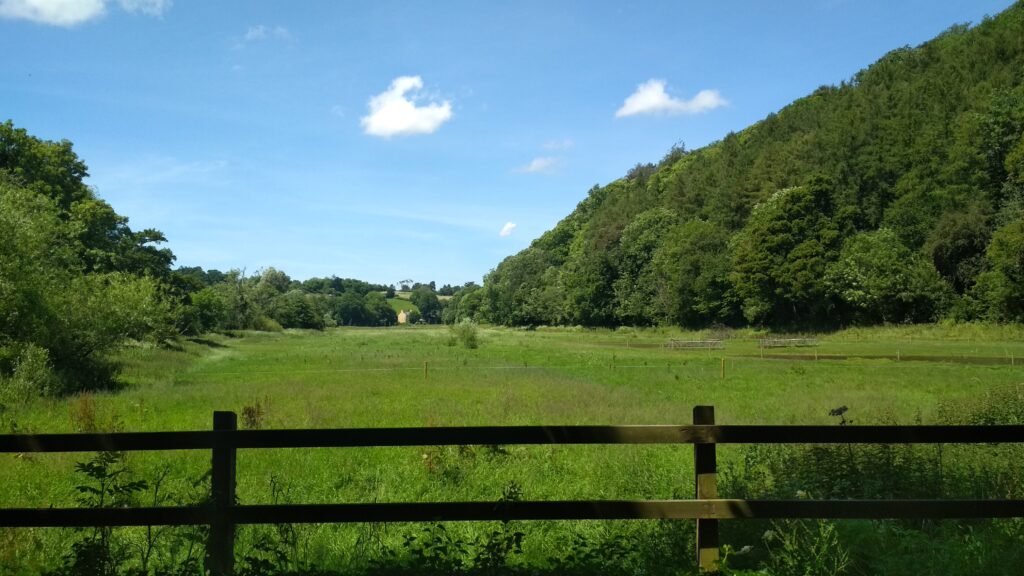
Indira Devi Chaudhurani in Supriyo Tagore’s Remembrance
On 8 March 1956, Arnold Bake had recorded Indira Devi Chaudhurani (1873-1960), Rabindranath’s niece, in her home in Santiniketan. The recording is numbered C52/NEP/71 C1 on the British Library Sound Archive catalogue. Indira Devi was 82 at the time of the recording, but her voice was still steady and her memory intact. About this recording Bake wrote later in his field report: ‘I had the opportunity to make some interesting records of Oriya folk music and Bengali songs, including the rendering of one of Tagore’s songs by his niece, aged 82— the Acting Vice-Chancellor of Visvabharati University – a remarkable achievement on the part of the old lady.’
Indira Devi Chaudhurani, singer, musicologist and writer, was the daughter of Rabindranath’s elder brother, Satyendranath Tagore, the first non-white officer of the Indian Civil Service. Her mother Jnanadanandini Devi was a writer and social reformer. Her brother, a year older than her, was Surendranath Tagore, also an author and translator. On 21 January 2016, I went with sound recordist Sukanta Majumdar to meet Supriyo Tagore, Surendranath’s grandson, to listen together to his grandaunt’s song. (Incidentally, Jaya Sen (Tagore), whose photograph we also found in Arnold Bake’s Santiniketan archives, was the daughter of Surendranath.) Supriyo Tagore (born in 1938) used to be the principal of the secondary school of Sanitiniketan, Patha Bhavan. His wife, Shubhra Tagore, who taught small children, was also present at this listening session. As Supriyoda listened to his father’s aunt, who used to live with them in the later part of her life and whom they used to call Na’di, memories happy and sad came flooding to his voice. They had no recordings of her songs, he said, and so this was the first time he was listening to something like this. It is interesting that even in elite homes such as the Tagores, audio recordings were not at all common till maybe 20 years later, when people started to have tape recorders for domestic use.
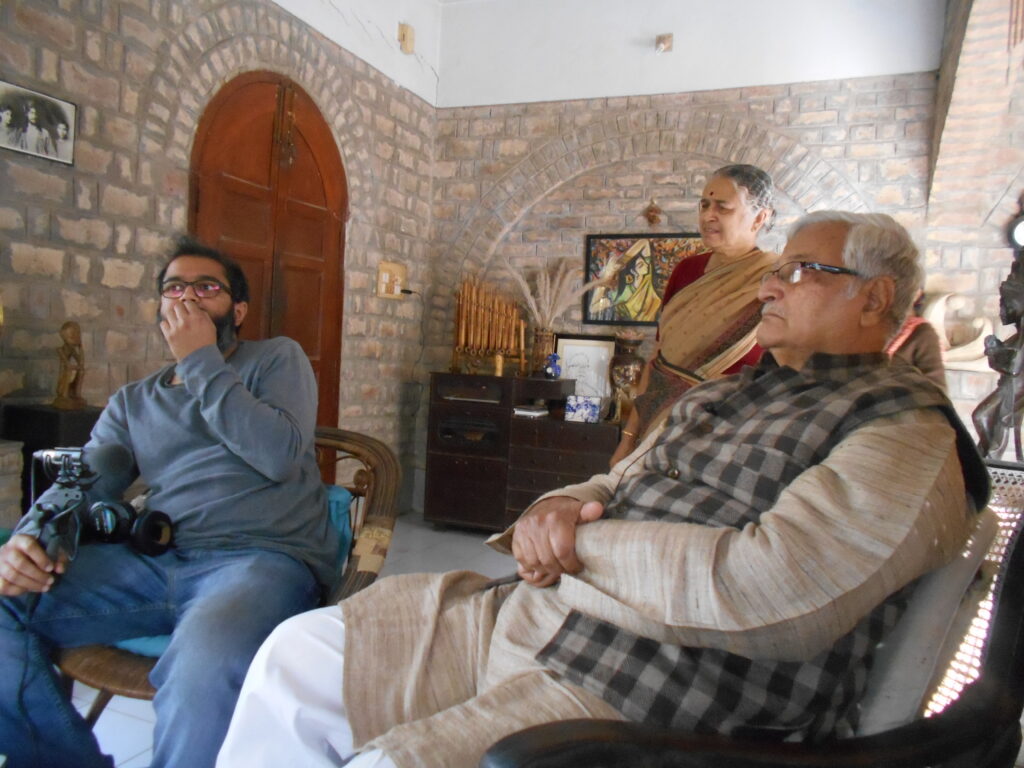
Supriyo and Shubhra Tagore listen to Bake’s recording in their home in Santiniketan, while Sukanta Majumdar records their listening. On the wall is a photograph of the siblings Surendranath and Indira Devi, with Rabindranath.
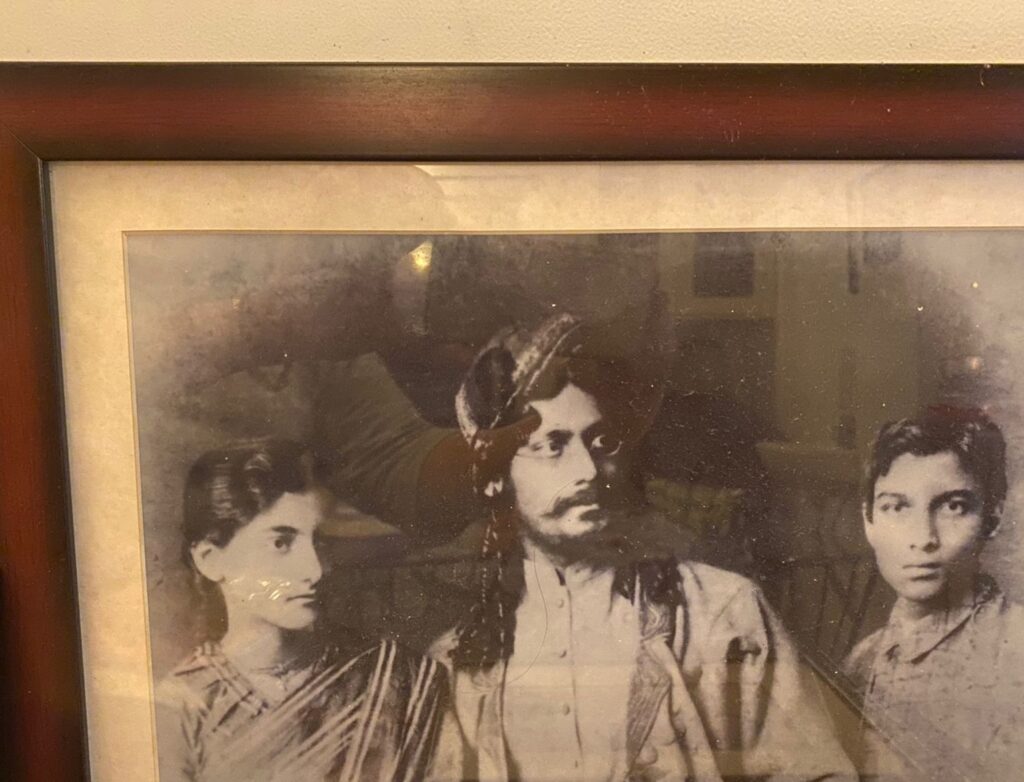
This photograph, which was on the wall of Supriyo Tagore’s home, is framed in the houses of many other family members. Indira Devi and Surendranath with their Robika, uncle Rabindranath, not that much older than them. I got the photograph from my old friend Ishani, granddaughter of Jaya and Motru Sen. Jaya Sen (Tagore), as we know, was one of Surendranath’s daughters and they were friends of the Bakes in the 1920s. The date of this photograph is unknown, but from the way they look, the siblings must have been in their teens and Rabindranath would be in his twenties.
The exclamation in Supriyoda’s voice as soon as Indira Devi’s song starts to play strikes me every time I listen to this recording. Supriyo Tagore was 22 when Indira Devi died, and he had spent many years in the same house with her. So, her voice must have startled him, given him a sense of her presence, as if she was in the room, as if she had come back, because that is what I hear when he says, ‘Ah!’
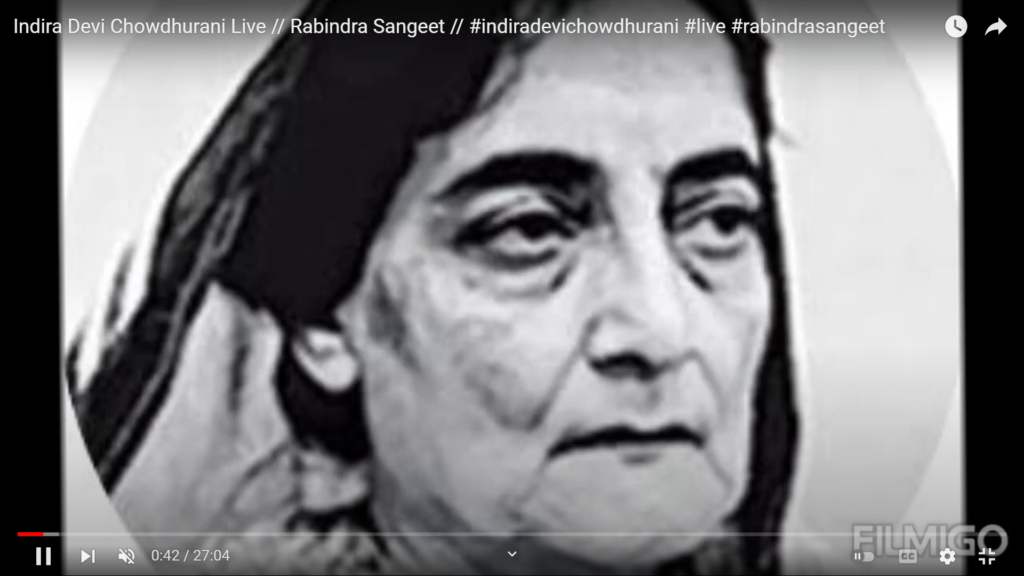
Interview of Indira Devi Chaudhurani taken in May 1960 by Kshitis Roy.
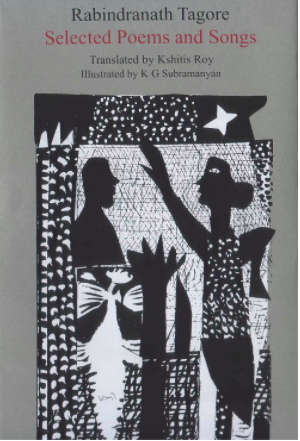
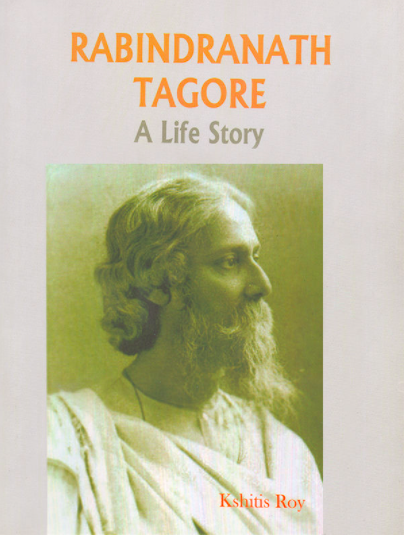
In her interview with Khitis Roy, translator and curator of the Rabindra Bhavan archives of Visva Bharati, in May 1960 in Santiniketan, on the occasion of Tagore’s centenary, which was broadcast on All India Radio, Indira Devi Choudhurani talked about many aspects of Tagore’s musical genius and the ‘universal appeal’ of many of his melodies. This interview was probably one of the last times when she talked at such length about Tagore’s songs and his creative process which she had so closely observed and of which she had also been a part, because Indira Debi passed away in August 1960, barely three months after this conversation. She was 87 at the time of this conversation and the clarity of her mind and her speech was truly remarkable. She remembered details from Tagore’s first visit to their home in Brighton in 1878, songs he used to sing and make them laugh, his wonderful tenor, the range of his musical interest and his amazing power of absorption of various influences, from the Irish melodies of Thomas Moore to Nidhubabur tappa and so much in between.
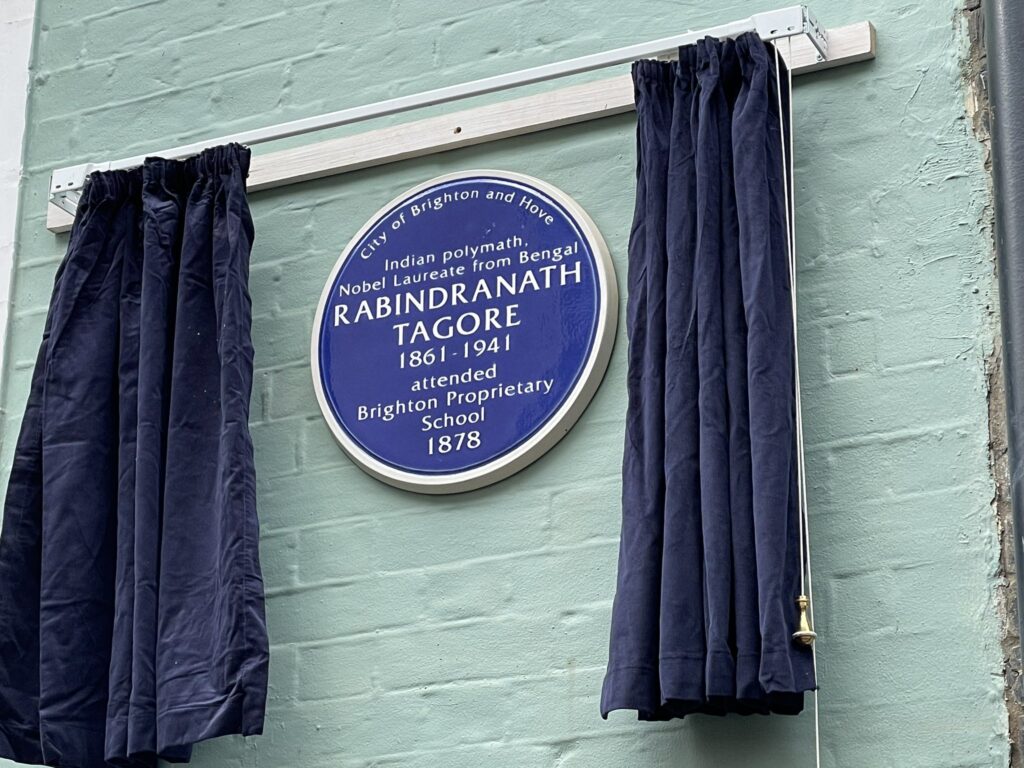
A plaque to commemorate Rabindranath Tagore’s stay in Brighton was unveiled in the city in November 2021. The plaque was the culmination of years of effort by Brighton-based social and cultural anthropologist and a specialist on Bauls of Bengal, Jeanne Openshaw. Photo: Internet
Listening to the 1960 conversation between Kshitis Roy and Indira Devi Chaudhurani, I have been reminded of the close friendship between Robika (Uncle Robi) and Bob or Bibi, as Tagore called Indira, which we have witnessed in his letters to her written between 1887 and 1895, compiled later as Chinnapatrabali (Torn Leaves).
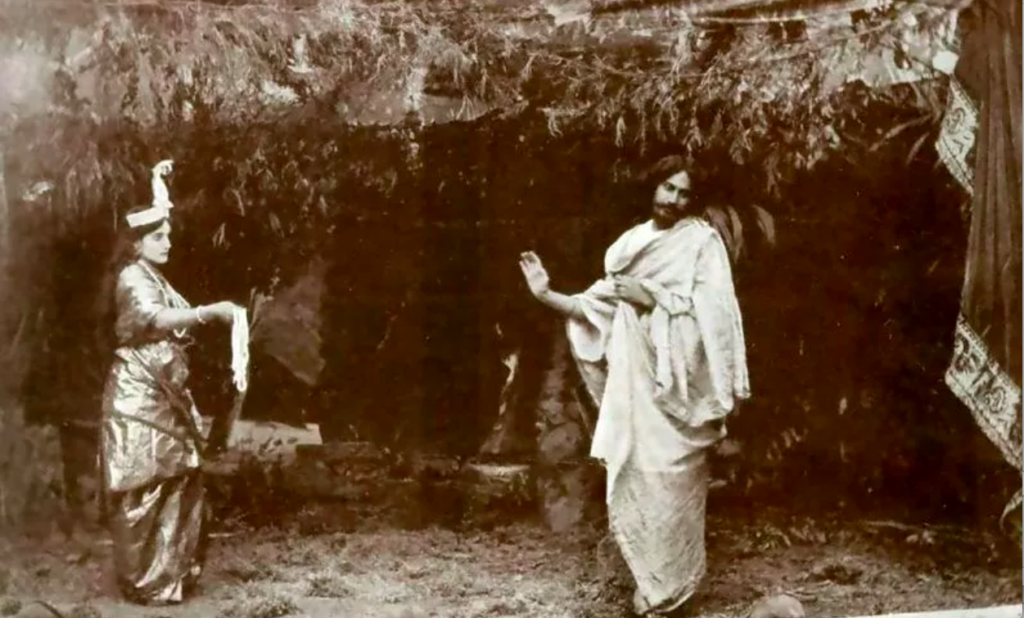
Indira Devi as Lakshmi in the 1881 play Balmiki Pratibha of Rabindranath, in which the poet/playwright played the role of Balmiki, who wrote down the ancient epic Ramayana. The photograph is probably from 1893, although internet sources put the date as 1881, when the play was first staged. Trouble is that Indira Devi was a girl of just eight in 1881 and she did not act in the play till much later. In 1881, another of Rabindranath’s nieces, Pratibha, eldest daughter of his third elder brother Hemendranath, played the part of Saraswati, while another of his nieces, Sushila, acted as Lakshmi. Interestingly, this photograph can also lead us to muse over the figure of Pratibha, who was a gifted musician and composer in her own right and who had notated many of Tagore’s songs, but who was somewhat eclipsed by other luminaries of the Tagore family.
Bake’s recording of Indira Devi’s song ‘Katobar bhebechhinu’ is beautiful. It starts with Bake prompting her with ‘korun’ or ‘ok, you may start now’ and ends with Indira Devi’s ‘thik achhe?’—’was that all right’? Supriyo Tagore told us little details of their childhood family house in Calcutta, where Indira Devi too used to live, and about the time when they came and settled in Santiniketan.
Supriyo Tagore recalls, among other things, the communal riots of 1946 in which their house in Palm Place, near Park Circus, Calcutta, was burned down. Their Calcutta house was called Lalbari or The Red House. They lived there as a joint family.
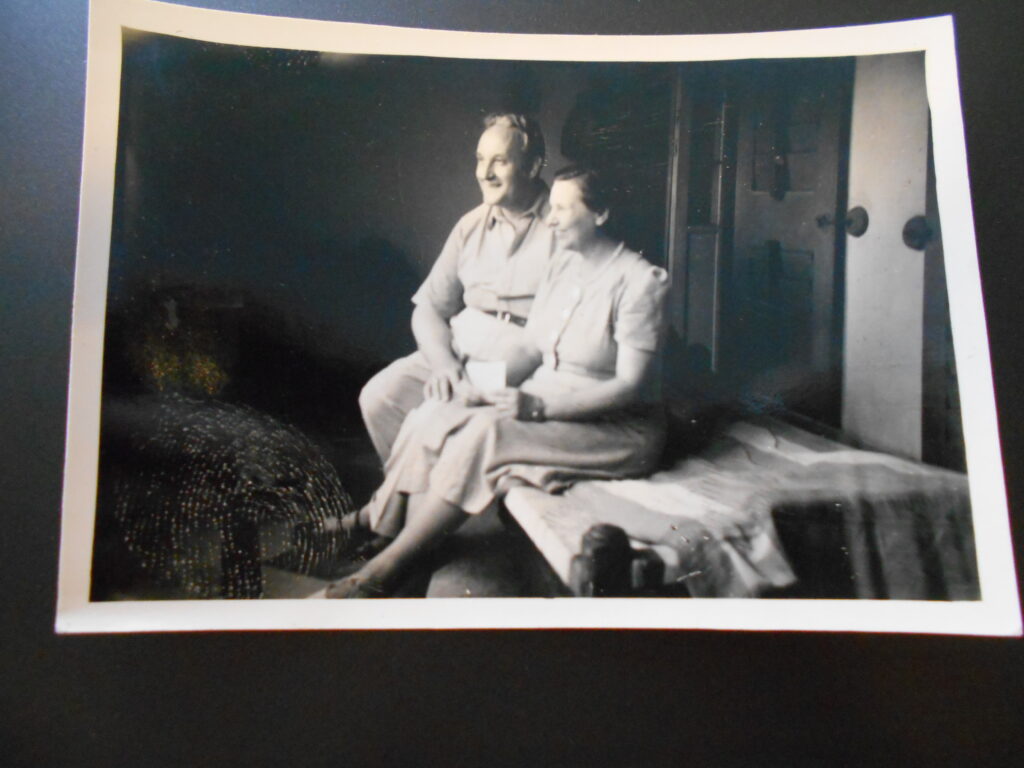
This photograph of a photograph in the Arnold Bake Collection at the Library of the University of Leiden, which I took in 2015, is possibly from the Bakes’ last visit to Santiniketan in 1956.
Supriyoda could not remember seeing the Bakes but said that it must have been in the house next to Ananda Pathshala, the nursery, which was the university quarters Indira Devi had been allotted at the time, as the interim Vice Chancellor of Visva Bharati. Interestingly, during her conversation with Kshitis Roy, Indira Devi had also mentioned the Bakes’ visit, but she had got the dates slightly mixed up and said they came in 1953. She remembered talking about the song ‘Katobar bhebechhinu’, based on the old English song ‘Drink to me only with thine eyes’, at which Bake had said, why don’t you sing it for me and I record with my tape recorder? This meeting not only gave us the recording numbered C52/NEP/71 C1, but it also led Arnold Bake to publish a comparative study of the two songs, based on Indira Devi Chaudhurani’s rendition of ‘Katobar’.
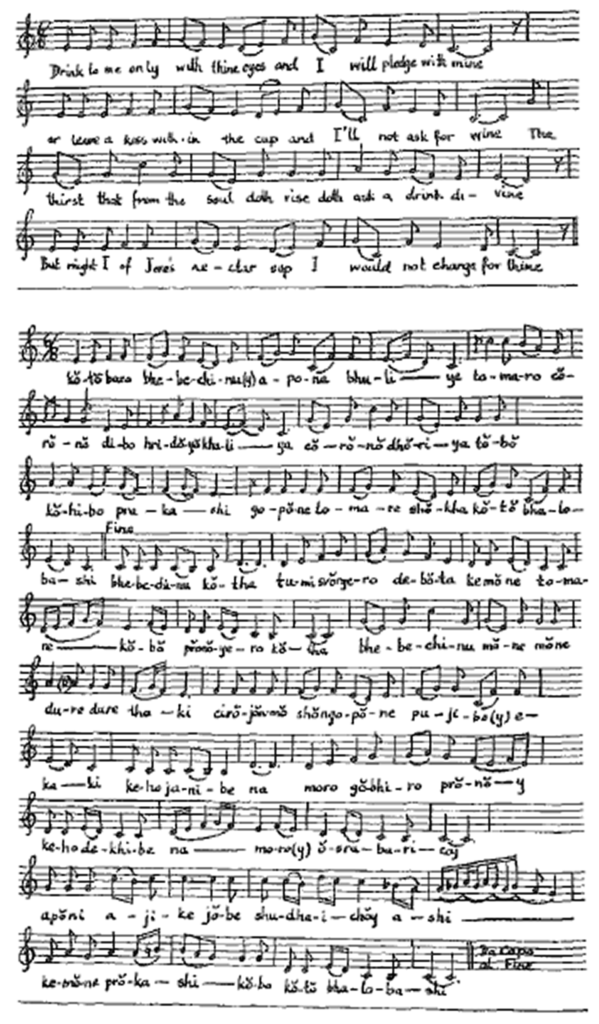
Page from Arnold Bake, ‘Tagore and Western Music’, in Rabindranath Tagore: A Centenary Volume, 1861–1961. (New Delhi: Sahitya Akademi, 1961), pp. 88–95.
The conversation with Supriyo Tagore moved from Indira Devi’s song to other questions centred on Bake’s 1956 visit and his Santiniketan friends. We looked at photos and letters. ‘Your old cook Ganapati is now with Professor Roy North at Malancha,’ Annada Sankar Ray had written to Bake. Who was Professor Roy North? I asked Supriyoda. He taught us English, he said. And Ganapati, yes, that name does ring a bell.
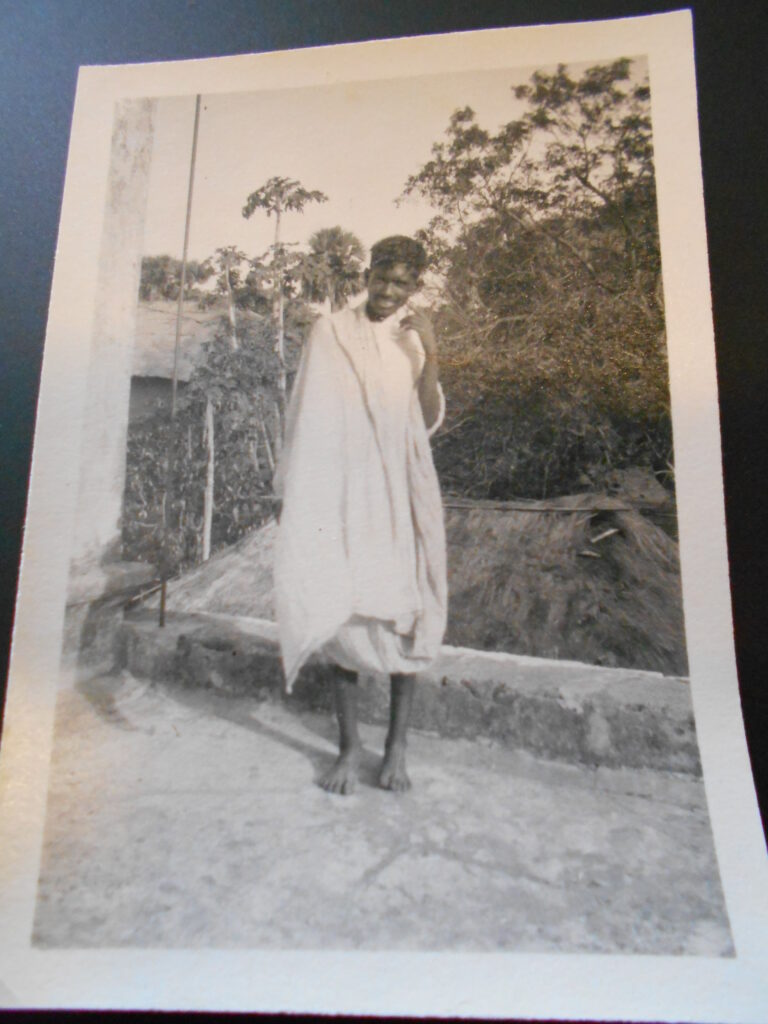
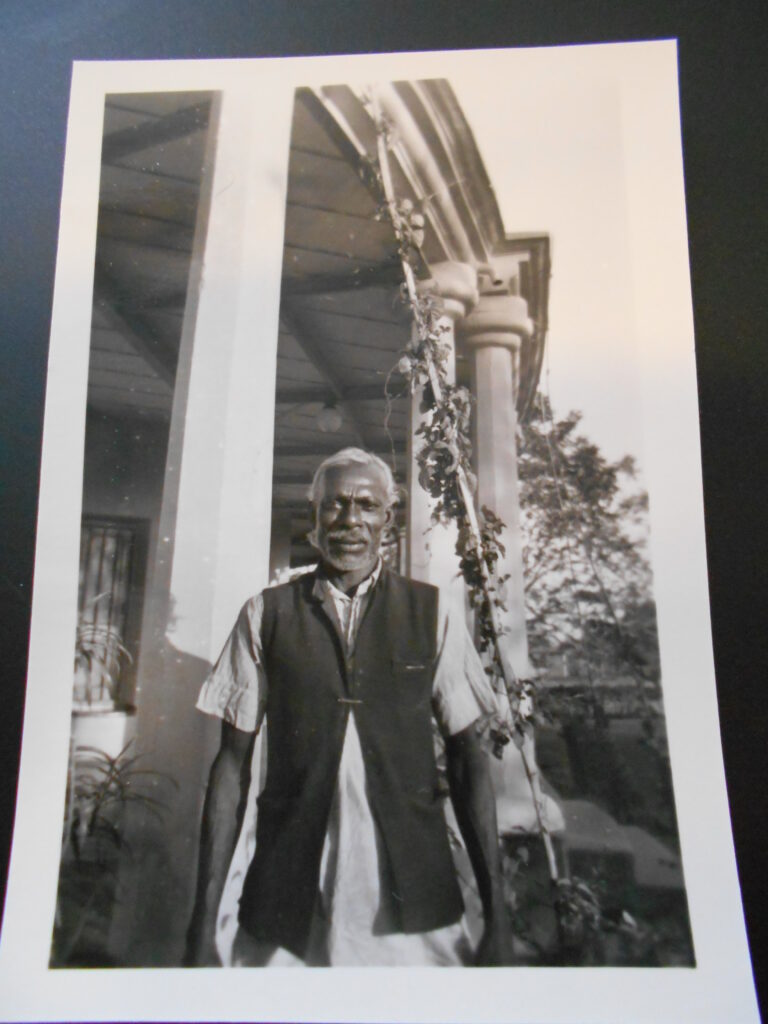
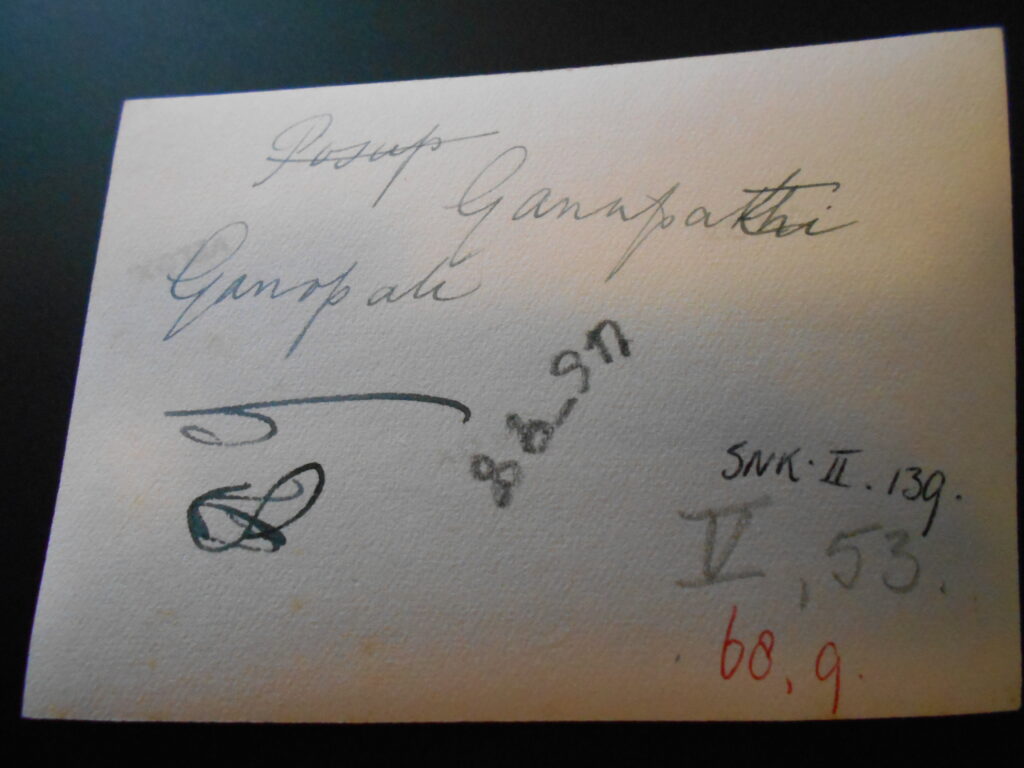
With Ganapati, Bake went back a long way. He was his companion on his trip to Mainadal in 1933. In 1931, Arnold and Cornelia Bake had gone to Pasupati and Ganapati’s village to listen to kirtan. So, in 1956 it must have made them both so happy to meet again.
On an earlier visit to Santiniketan on 19 January 2016, we had met Bithika Mukherjee, an old Santiniketan resident, whose sister was the famous Tagore singer Kanika Bandopadhyay. We had listened together to Bake’s recordings, while she had delighted us with stories of the asram in the early days. She told us how they had come to live in Santiniketan and how people came from their village in Bankura to work in the Santiniketan institution and people’s homes.
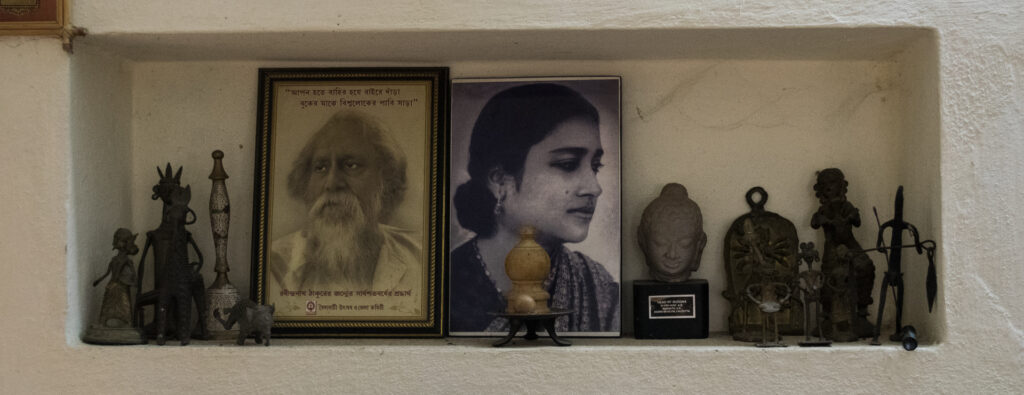
A portrait of Kanika Bandopadhyay (1924-2000), or Mohor as she was more popularly known, on the shelf in her sister Bithika Mukherjee’s living room.
We began by listening to Indira Devi’s recording with Bithika Mukherjee and her son Priyam, who is also a Tagore singer and researcher.
There was my Dutch friend and translator, Jan Sijmen Zwarts, who was with us on this day and he too joined the discussion on the Indira Devi recording.
Through our conversations with Bithika and Priyam Mukherjee on the one hand, and with Supriyo and Shubhra Tagore, on the other, a layered picture of Santiniketan in the early years was unfolding. It is interesting I think to listen to these many voices talking about the same place and the same time, told from a range of perspectives, in conjunction with and in opposition to one another. What we see in/of a place depends so much on who we are and where we come from and where we are placed in the place.
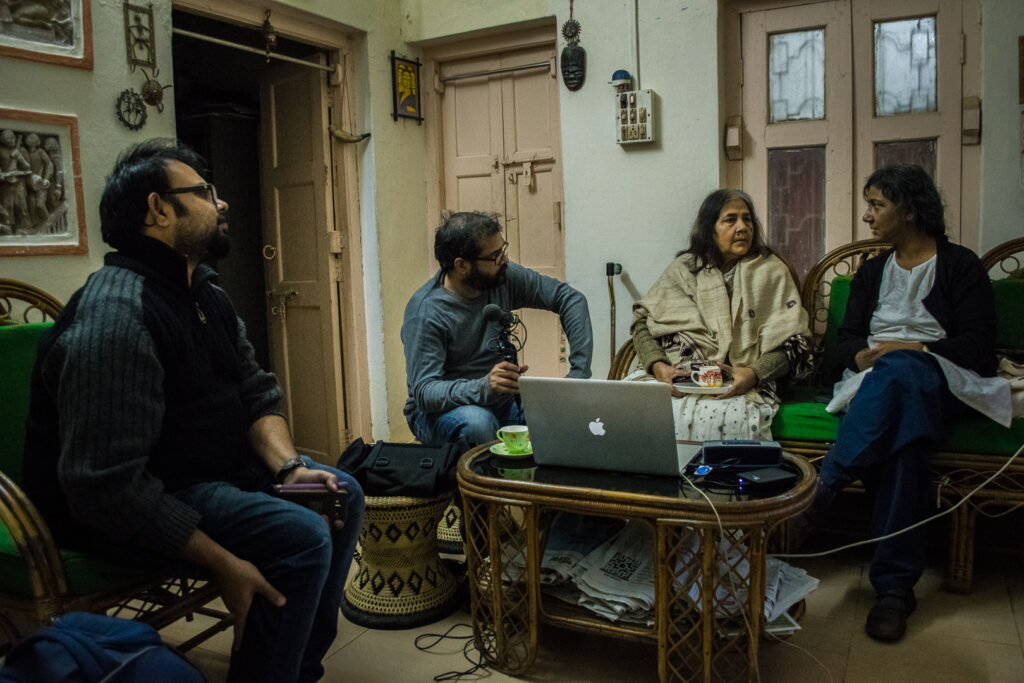
In Bithika Mukherjee’s home, 19 January 2016. From left to right, Priyam Mukherjee, Sukanta Majumdar, Bithika Mukherjee and Moushumi Bhowmik. Photo: Jan-Sijmen Zwarts.
With Bithika and Priyam Mukherjee, we listened to several of Bake’s recordings, including Savitri Govind’s. Priyam said, Indira Devi had written in her notes about some troubles in Savitri’s life which had forced her to leave Santiniketan.
I asked Supriyoda if he had been taught by Kshitimohan Sen. And he told us a beautiful story about Kshitimohan in his late age, possibly the same time when Bake was coming to Santiniketan for the last time, when he had gone to him to learn some Sanskrit sloka to recite at a ceremony. Then, on the actual day of the performance, Kshitimohan, who was infirm at the time, had insisted on coming to the celebration. So, he was brought in. Then, as Supriyoda was reciting the sloka, he heard the voice of Kshitimohan; the master had joined him in the recitation!
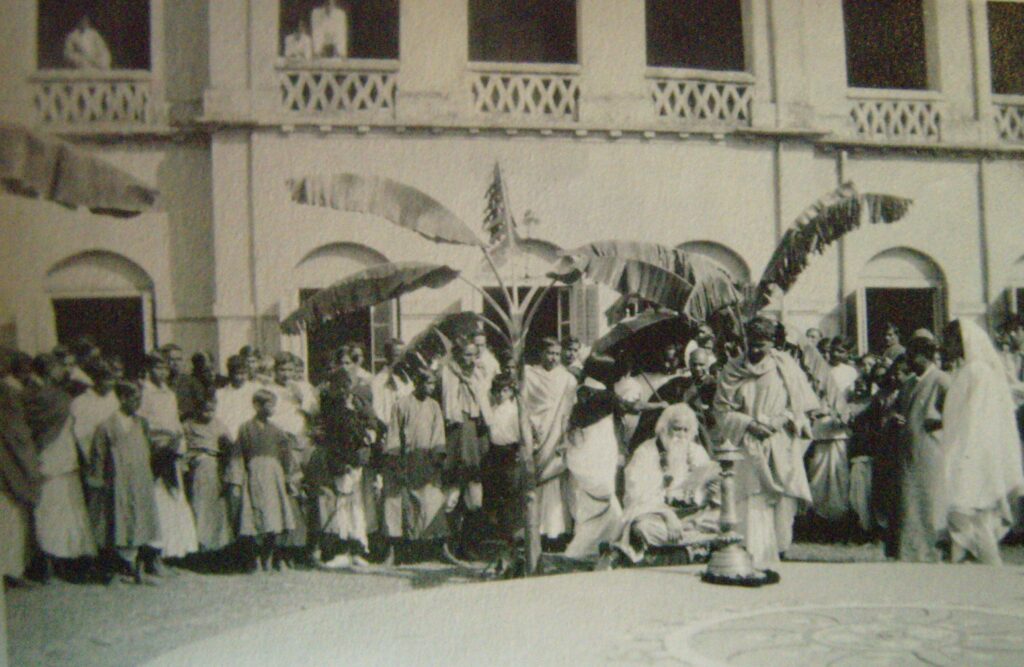
This photograph was taken by Arnold Bake, possibly in the late 1920s. Could this be one of Tagore’s birthday celebrations? The place and the occasion were not clear to anyone who saw this, perhaps it was Sriniketan, the old Kuthibari perhaps–there were many opinions. However, standing to the left of the poet is Kshitimohan Sen, who was always there to recite Sanskrit slokas at every auspicious occasion. I took this photo of the original photo while working in the Arnold Bake archives at the library of Leiden University in 2015.
Talking about festivals and ceremonies, Bithika Mukherjee had told us how they celebrated Basantotsav, what flowers they made garlands with and how totally unostentatious everything was when they were small. She talked about how people dressed in those days, what floral ornaments they made, how the girls decked their hair, what saris they bought and how simple life was in the asram. People were content with whatever they had, she said. She talked about Gurudayal Mallik and Laksmisvar Sinha and how down to earth they were. The land too was plain and barren and that itself was its beauty, she said.
Bithika was married to Naba Kumar Mukherjee (1930-2015), an agro-economist and senior faculty of the Sriniketan Rural Reconstruction department of Visva Bharati, who later founded the Elmhirst Institute of Community Studies. She had spent many years in Sriniketan and on 19 January 2015 she talked candidly about the difference between Santiniketan and Sriniketan as she felt it; about the warmth and intimacy of Sriniketan and its hands-on approach to life as opposed to the art and artifice of Santiniketan. She had once been part of a mission to Dartington Hall in Devon, the institute Leonard Elmhirst had set up on the model of Rabindranath’s Visva Bharati. Interestingly, during our conversation two days later with Supriyo and Shubhra Tagore, they too had talked about visiting Dartington Hall.
Bithika Mukherjee talks about Sriniketan and Santiniketan
Bithika Mukherjee talks about visiting Dartington
Shubhra and Supriyo Tagore talk about visiting Dartington Hall and being taken by Elmhirst to the top a hill overlooking the meadows. Apparently, it was here that Dorothy and Leonard Elmhirst had brought Gurudev and asked, Will this do, Gurudev? Tagore surveyed the land and said, it will.
The excitement Supriyo Tagore showed upon seeing the photos of his aunts Jaya and Monju was similar to his excitement at listening to the recording of Indira Devi.
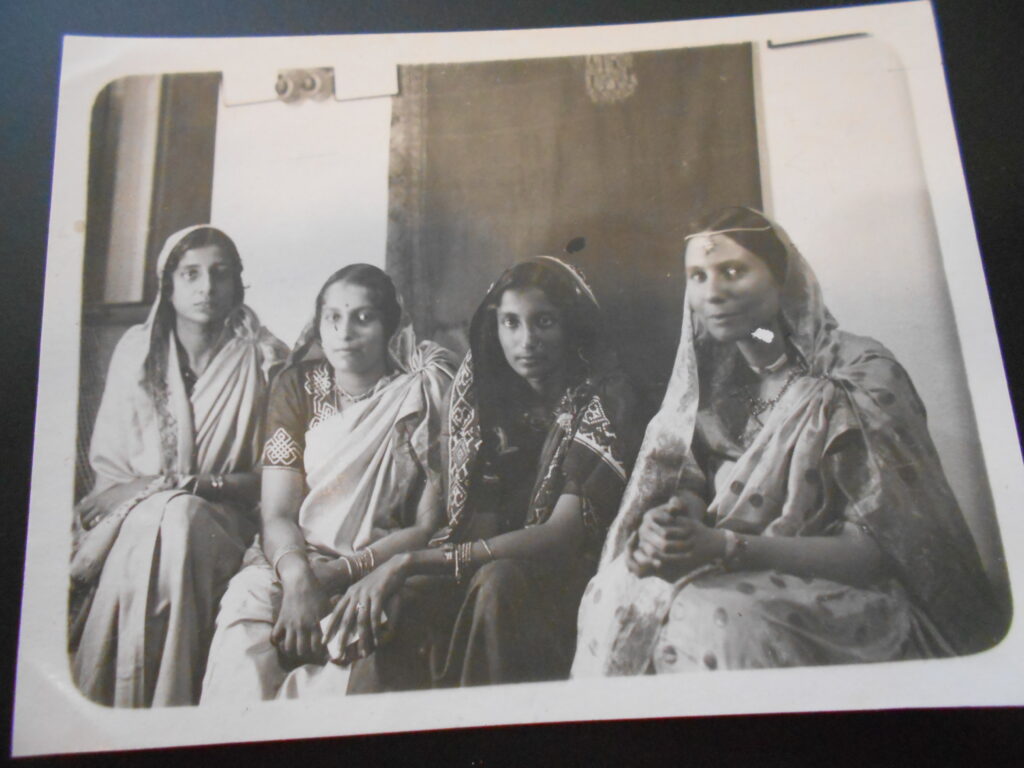
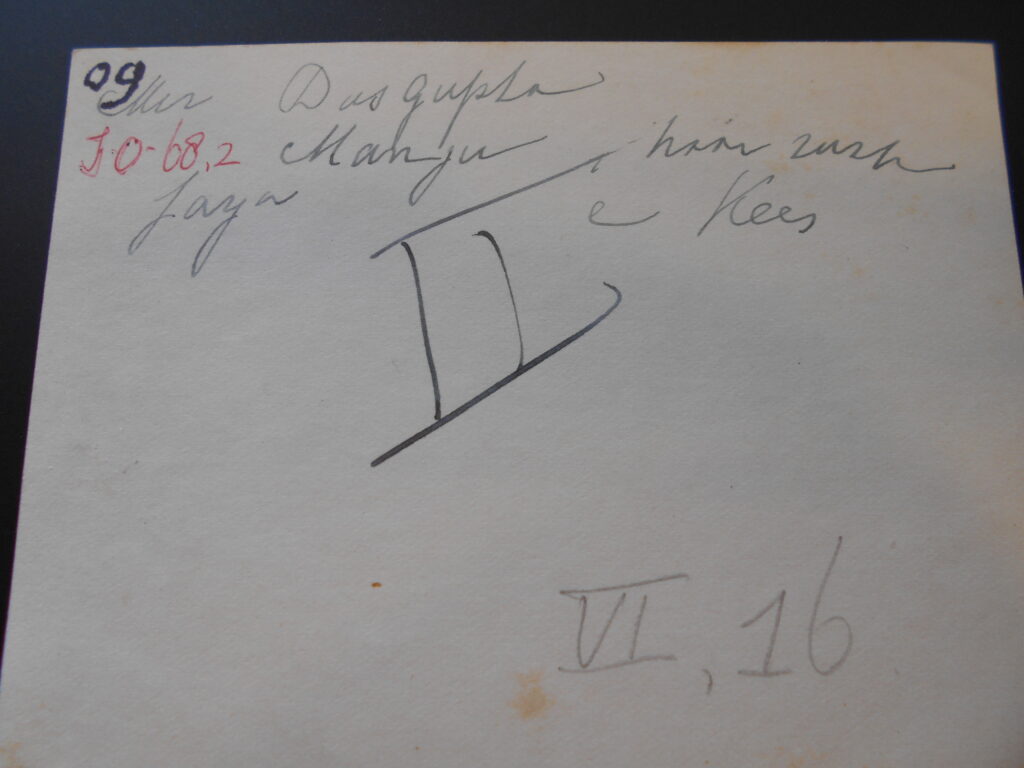
Photo of photos from the Arnold Bake Collection, Special Collections, Library of the University of Leiden, 2015.
What kind of a person was Pratima Devi, wife of Rathindranath, daughter-in-law of Rabindranath? Supriyo and Shubhra Tagore’s answer shows how much of a clan the Tagore family was, how everyone was related to everyone and how in the end they were a world unto themselves.
Supriyo Tagore listened to Bake’s Pathe records of Rabindrasangit and was most pleasantly surprised. As he listened to Megher pore megh, he kept saying, There, see! He is missing the nuances of the tappa! How was Indira Devi as a person? Independent and active till the end? I asked him. He said, yes, that is how she was. Supriyoda also listened to the Chitralekha Chaudhury recording of Arnold Bake. She was my classmate, he said. Then he said how there used to be some competition among the girls for who would get the Dinendra Prize for best singer—Chitralekha, his sister Supurna, and Manju were the contestants. One would win and the others would cry, he said, and we laughed.
Supriyo Tagore listens to Bake’s Rabindrasangit
Supriyo Tagore talks about Indira Devi
Supriyo Tagore on Chitralekha Chaudhury
Postcript
In 2019, I was in Totnes, Devon, for some work with the photographer, Mohini Chandra . And we went walking along the Dart river towards Dartington Hall and these recordings of Arnold Bake, and the photographs and my own conversations with various people from some years ago were playing in my head. Will this do, Gurudev? Leonard Elmhirst is said to have asked the poet. I looked at the vast empty spaces, the beautiful green. I thought how Santiniketan used to be an open empty space once, arid and beautiful.
